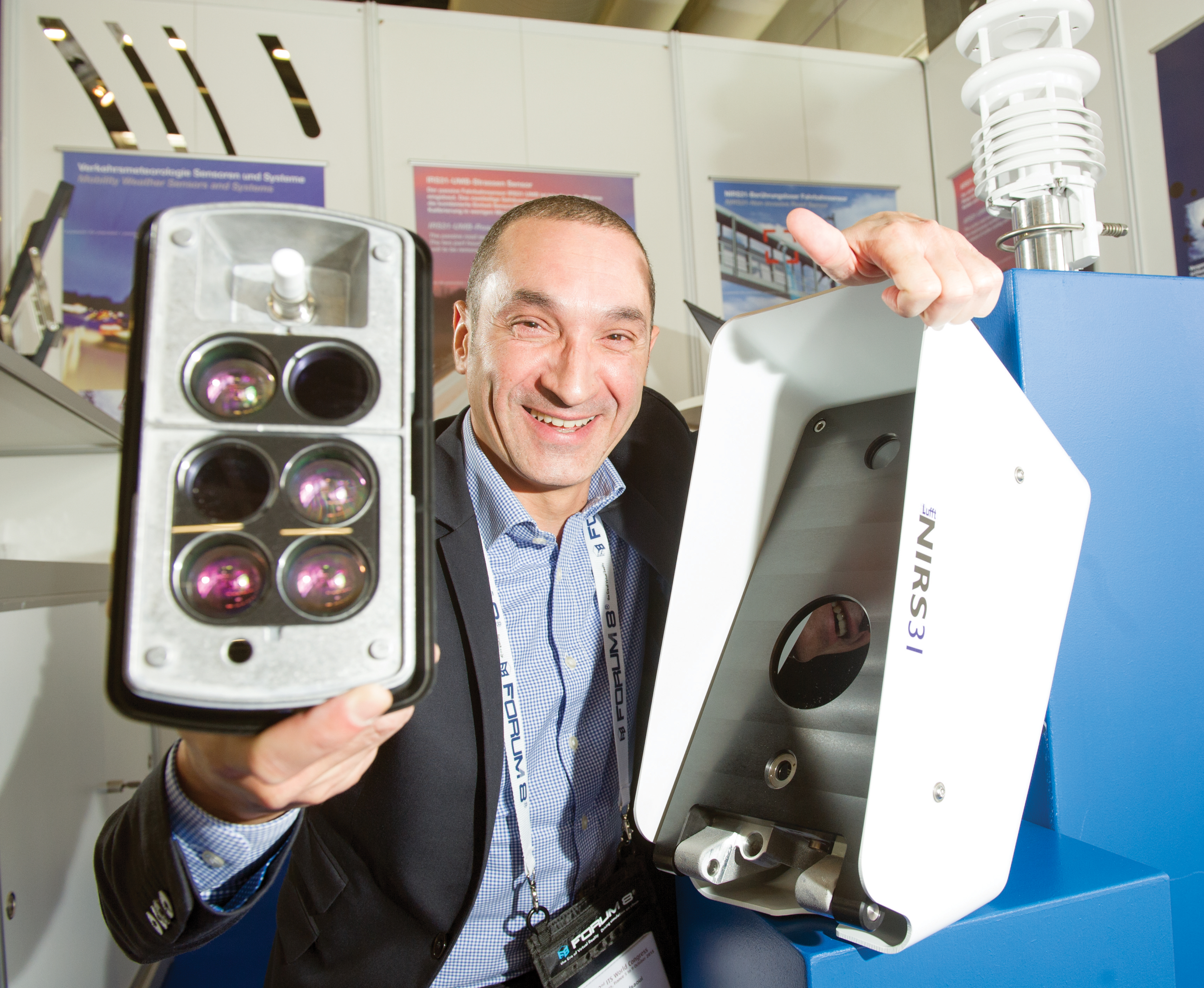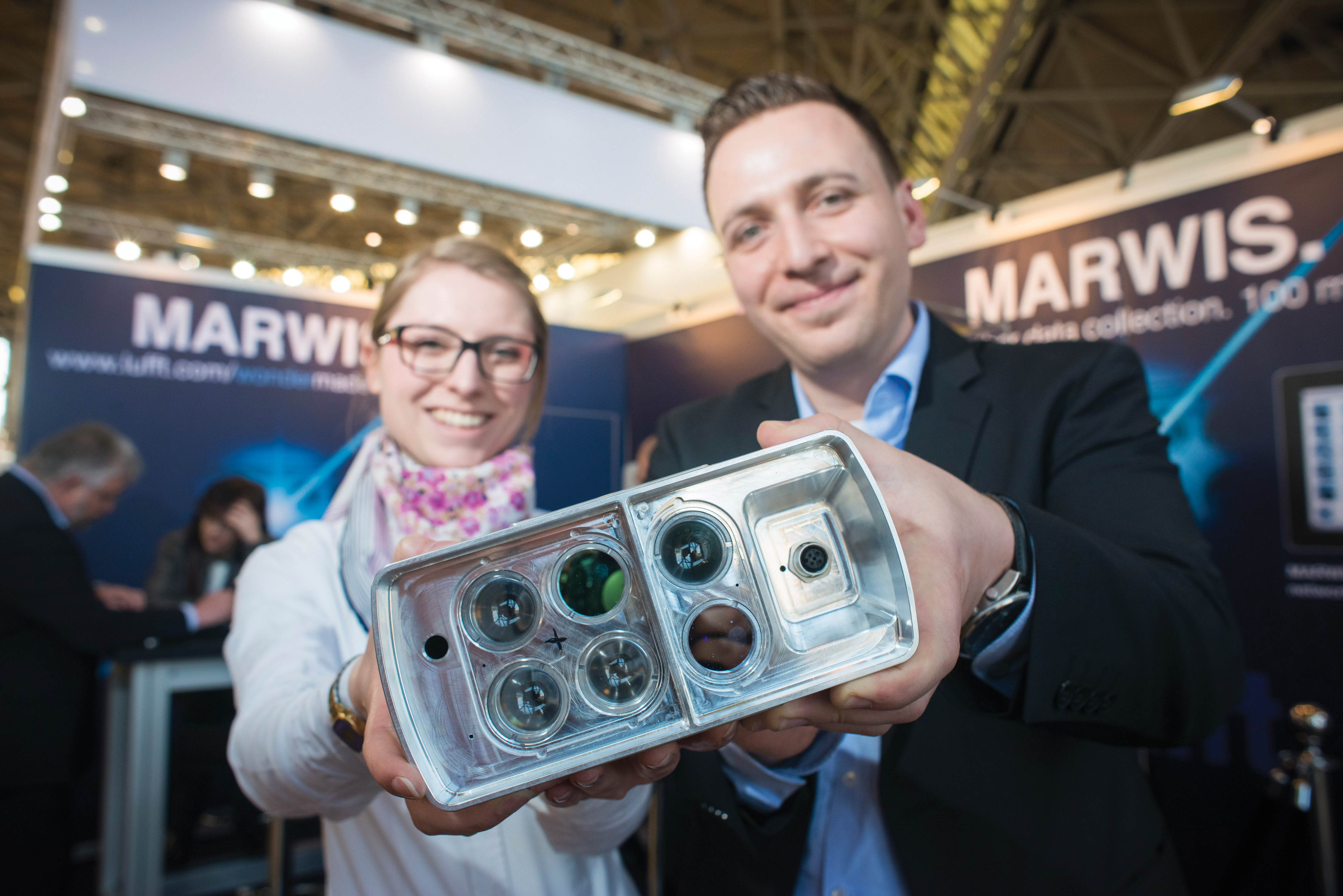Weather and road condition sensors are becoming much more agile – Alan Dron looks at the latest state of play.
Meteorological organisations invest millions in super-computers to crunch data for ever-more accurate forecasts but inherent unpredictability means that other methods of alerting drivers and road authorities to fast-changing weather and highway conditions are essential.
For years, static weather sensors to measure factors such as surface water, ice or high roadway temperatures have been embedded in highways to provide such data. But that is changing. Technology is increasingly allowing road surface and weather sensors to not only be positioned in remote locations but also on vehicles that can cover large tracts of a local authority’s road network. So how effective are they?
Typical of the new generation of sensors is
“It can also collect traffic data and we’re just starting to put air quality sensors on to them too,” says Jon Tarleton, transportation marketing specialist at the Finland-headquartered company.
In rural areas the RWS200 is normally pole-mounted and with a roadside cabinet, while in urban environments it is often positioned atop existing infrastructure including traffic lights. Where desirable, Vaisala’s DSC211 Condition Sensor, which measures road surface conditions using infrared and laser technology, can also be integrated into the RWS200.
“With any environmental sensor there’s some maintenance involved,” says product manager Brett Hansen. “The non-intrusive technology, compared to in-road technology is a bit easier to maintain; maintenance is pretty minimal. We recommend a minimum annual visit to the site to clean the sensor lens and calibrate it. Typically, that’s done in the fall, before the winter season.”
Germany’s
Lufft Group MD Martin Nicklas says Marwis can measure water film thickness and ice and has huge potential to supplement invasive sensors - removing the need to drill into the road’s surface is a great ‘plus’, he added. Mobile sensors can be attached to gritting lorries, or other vehicles used by road authority staff responsible for evaluating where the road needs treating and directing ploughs and spreaders to the required areas.
However, while the fully-fledged mobile sensors are becoming increasingly popular, Vaisala’s Tarleton believes weather information from connected vehicles “will not be accurate enough to act as our only source of road weather data.
“Even if you assume large quantities of crowd-sourced vehicle data will mask any data quality issues…a weather forecast and decisions surrounding weather need to be inputted into computer models [and] these models need accurate information.
“Crowd-sourced data from vehicles can supplement fixed weather stations, but weather stations must remain a part of the equation or the quality of decisions will suffer.”
One such recently launched system is the RWS-20 roadside visibility sensor from UK company
The RWS-20 uses a 24V DC supply and can also be mobile-mounted on trailers to trigger fog warnings on variable message systems, both where the fog is lying and beyond, to give drivers prior warning of the hazard.
Asked about any discernible trends in the marketplace, Vaisala’s Tarleton said road authorities are increasingly comfortable in allowing external organisations to manage their road condition data.
“Where once an agency demanded all their data remain within their own network, they are now seeing the benefits of allowing someone else to manage the network. And one of the biggest benefits is in allowing the sharing of data with other agencies and stakeholders, with many now seeing that in most cases their data is safer and easier to access in the cloud than if they tried to host themselves.”
High Sierra’s Hansen says that mobile technology is starting to gain more acceptance. “We have a new mobile surface air temperature sensor, the Mobile Surface Sentinel, and we’ve done a lot of work to make it very robust.
“Mobile technology has seen slower adoption than the fixed application, simply because to do it on a wide scale and equip many trucks has been kind of cost-prohibitive.” But acceptance is growing, “especially with vehicle-to-vehicle and vehicle-to-infrastructure type communication. I think agencies are certain to see the benefit of it more and are able to justify the return on investment more easily than in the past.”
Lufft’s Nicklas sums his views up by saying: “Wireless is a key trend. Globally, we see agencies asking for low power consumption. In the UK and Germany you have power supplies all along the motorway but in the middle of China they like to use small power supplies such as a photovoltaic cell. There is more and more internet connection through the cloud. Each sensor directly routes information to a cloud-based system, with no boxes by the roadside.”
Authorities, he added, “are not interested in sensor technology, they are interested in ‘plug-and-play’. What I also see is a trend towards more robustness and sensors that are ‘really smart’ – one that you can communicate with and they can communicate to you.” More standardised protocols for easy connectivity would be useful, he suggested.
“The key point is that they will reduce costs. Sometimes we have to differentiate between capital costs and the cost of ownership.” He likened this to German cars such as
The move towards wireless systems has also been noted by Campbell Scientific, which makes a range of weather stations.
“A lot of suppliers are moving towards that because in certain areas it’s difficult to put in a landline or mains,” said technical sales engineer Vim Mistry. “They tend to want wireless systems, using the cellular network - but even when connected to a cellular network there are still network, maintenance and contract costs. Those don’t disappear.”
And overall although costs with some wireless systems, may be lower, that may impact the quality of data they produce – “there’s a trade-off,” Mistry says. “Some authorities will have one or two expensive weather stations scattered over their area of responsibility to provide high-resolution data, with lower-resolution installations filling in the gaps.
“You can have satellite and radio-based wireless solutions but they tend to be more power hungry and require larger solar panels and battery banks. The cost of satellite solutions can be very expensive. Radio solutions have a higher upfront cost, but then do not have the ongoing costs of cellular solutions. Radio solutions faced a change in legislation in 2015, regarding 2.4GHz radio transmitters, meaning many solutions providers switched over to 868MHz.”
So it seems the technology is changing as fast as the weather itself.











